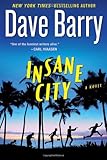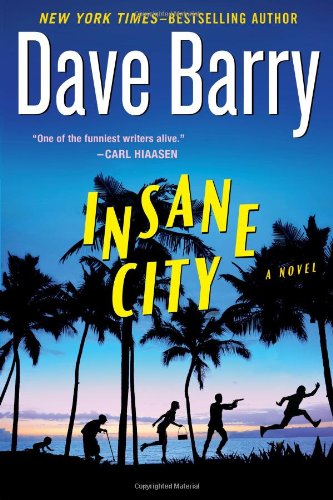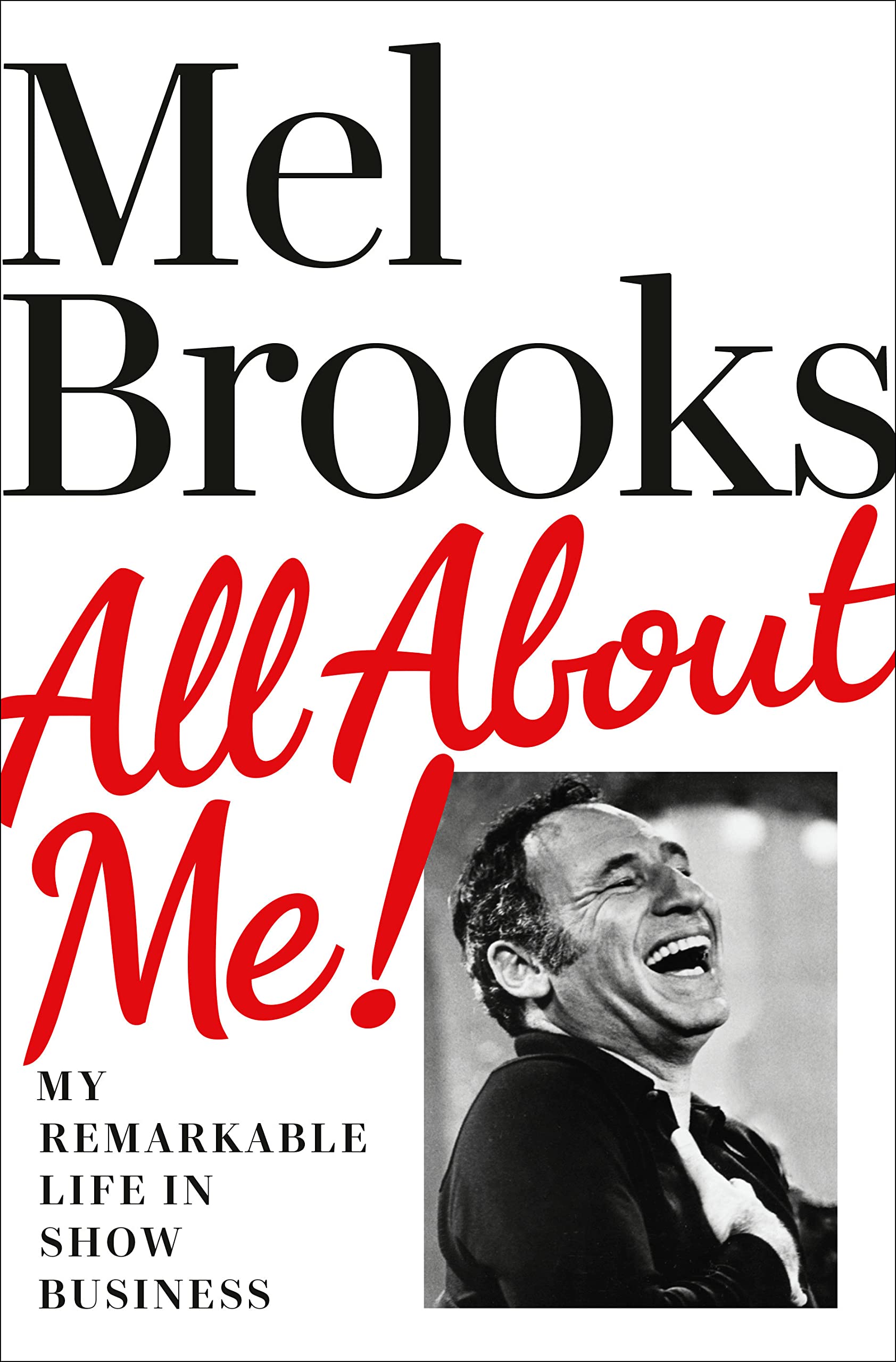There is an almost gravitational pull towards farce — perhaps explaining why we descend into it — that draws everything from Congressional budget negotiations to the badminton competition at the 2012 London Olympics into its field. And yet farce also depends on the careful orchestration of systematic collapse, whether it be a badminton player guiding her shot into the net or a writer steering her fictions towards anarchy in a most orderly and exquisitely timed fashion.
This imaginative drive to bring farcical inevitability under control is both disciplined and, as G.K. Chesterston points out, romantic. In his defense of the “lighter and wilder forms of art,” Chesterton whimsically describes the “nameless anarchism” behind our desire for farce:
To the quietest human being, seated in the quietest house, there will sometimes come a sudden and unmeaning hunger for the possibilities or impossibilities of things; he will abruptly wonder whether the teapot may not suddenly begin to pour out honey or sea-water, the clock to point to all hours of the day at once, the candle to burn green or crimson, the door to open upon a lake or a potato-field instead of a London street.
The descent into farce is thus an ascent into a higher imaginative realm, the yearning for a chaos more magical than the one that governs our lives.
Several recent farcical works have crafted this chaotic order to predictably entertaining effect. If you missed any of these the first time around, fear not. It is a minor readerly tragedy easily remedied.
1. Michael Frayn, Skios
 In Skios, Michael Frayn, the author of the beloved theatrical farce Noises Off, set out to capture the same bustling comic energy in a novel. The plot involves Oliver Fox, a charming roué who on a whim decides to impersonate the keynote speaker of a European cultural conference taking place on a sun-baked Greek island. Fox is welcomed by the lovely Nikki Hook, who shepherds the impostor through the weekend’s events even as some part of her knows the dashing figure is too good — and good-looking — to be true. By a causal chain of events too complicated to recount here, Dr. Norman Wilfred, the real keynote speaker, adopts Oliver Fox’s identity only to be hounded by the latter’s scorned lovers and the scorching Greek sun.
In Skios, Michael Frayn, the author of the beloved theatrical farce Noises Off, set out to capture the same bustling comic energy in a novel. The plot involves Oliver Fox, a charming roué who on a whim decides to impersonate the keynote speaker of a European cultural conference taking place on a sun-baked Greek island. Fox is welcomed by the lovely Nikki Hook, who shepherds the impostor through the weekend’s events even as some part of her knows the dashing figure is too good — and good-looking — to be true. By a causal chain of events too complicated to recount here, Dr. Norman Wilfred, the real keynote speaker, adopts Oliver Fox’s identity only to be hounded by the latter’s scorned lovers and the scorching Greek sun.
In the novel’s first chapter, there is a description of the arriving plane carrying Oliver and Norman that aptly describes the farcical condition: “Too late now to alter what that was going to be. It was coming towards them all at 500 mph.” This inevitable force finds a particularly suitable target in the perfectly ordered and manicured grounds of the foundation’s retreat:
Everything was so at ease with itself, so delicately balanced, like the works of a good watch, or nature itself…It was a complete world, a miniature model of the European civilization that it existed to promote…
The very clockwork precision that makes this miniature world so balanced also makes it particularly primed for comic disruption. In one scene, Fox can’t remember the name of his cabin, all of which are named after Greeks. After shuttling among Xenocles, Theodectes, Menander, and Demosthenes, he convinces himself that Damocles is the right name. Oliver is wrong about the name but right in sense that Damocles is an apt figure for the farcical impostor who is always one false move, or unlucky circumstance, away from disastrous revelation. The least slip-up and the strings controlling the puppet show are severed, which is precisely what makes farce so exhilarating:“[Oliver] felt intensely alive, like a mayfly with only one day to enjoy it all.”
2. Penelope Lively, How It All Began
 Penelope Lively’s How It All Began, which itself begins with an epigraph on chaos theory, is also structured around a merciless and uncontrollable causal chain of events. While Lively’s novel is best described as a comedy of manners, it originates by drawing on the accidents and “swerves” of farcical theater. The plot involves how the mugging of an elderly woman systemically “derail[s]” the lives of seven people. As the consequences of the mugging ripple outward, a series of personal, professional, and familial humiliations are “capriciously triggered” and meticulously chronicled by Lively.
Penelope Lively’s How It All Began, which itself begins with an epigraph on chaos theory, is also structured around a merciless and uncontrollable causal chain of events. While Lively’s novel is best described as a comedy of manners, it originates by drawing on the accidents and “swerves” of farcical theater. The plot involves how the mugging of an elderly woman systemically “derail[s]” the lives of seven people. As the consequences of the mugging ripple outward, a series of personal, professional, and familial humiliations are “capriciously triggered” and meticulously chronicled by Lively.
How It All Began’s one true farcical character is a retired history professor, Henry, who is so quintessentially donnish that “you couldn’t invent him.” Some of the novel’s funniest scenes involve his doomed effort to host a TV program on Hogarth’s London for the BBC, whose executive is alternately fascinated and repulsed by the parodic don’s “awful appeal.” And yet his farcical status makes him an oddly moving figure of pathos as he muffs his lines and is mocked by youths hanging out on street corners. Among the seven people whose lives are disrupted by the mugging, one feels the most for Henry, whose harmless pedantry is exposed to the public’s — and the reader’s — enjoyment.
3. Dave Barry, Insane City
 If you like your farce manic, pure, and pathos-free, then Dave Barry’s Insane City is perfect. The novel is set during the wedding weekend of a mismatched pair — the moneyed bride is a high-powered lawyer while the groom is a marketer who tweets about feminine hygiene products. The plot involves a lost wedding ring, Haitian refugees, and a stoned billionaire’s inventive, extravagant method of procuring late-night take-out. A sample sentence captures the spirit of the novel: “Any man fleeing from the police with three women, two children, and an orangutan is a friend of mine.” And that’s not even mentioning the flamingo suit and pirate ship.
If you like your farce manic, pure, and pathos-free, then Dave Barry’s Insane City is perfect. The novel is set during the wedding weekend of a mismatched pair — the moneyed bride is a high-powered lawyer while the groom is a marketer who tweets about feminine hygiene products. The plot involves a lost wedding ring, Haitian refugees, and a stoned billionaire’s inventive, extravagant method of procuring late-night take-out. A sample sentence captures the spirit of the novel: “Any man fleeing from the police with three women, two children, and an orangutan is a friend of mine.” And that’s not even mentioning the flamingo suit and pirate ship.
4. Lucy Ellmann, Mimi
 In the same manic vein is Lucy Ellman’s Mimi, a novel that stays true to farce’s etymologic roots — from farcire, to stuff — by packing in a romantic comedy, family tragedy, lists, music scores, a manifesto, and even a deli menu. The plot involves a neurotic Manhattan plastic surgeon who takes up with an free-spirited public speaking guru, Mimi, who in turn inspires him to start a feminist revolution. Ellmann’s is a frenetic, energetic style that attempts to will comedy into existence through sheer determination by deploying an army of exclamation marks, legions of italics, swarms of puns. Farcical in style if not in content, the novel feels somehow off, like a sentence with a dangling modifier. Unlike the concentrated zaniness of Barry’s south Florida or the delicate balance of Frayn’s circumscribed Skios, Mimi’s sprawl disperses Ellmann’s anarchic energy until it is too diffuse to provide a charge.
In the same manic vein is Lucy Ellman’s Mimi, a novel that stays true to farce’s etymologic roots — from farcire, to stuff — by packing in a romantic comedy, family tragedy, lists, music scores, a manifesto, and even a deli menu. The plot involves a neurotic Manhattan plastic surgeon who takes up with an free-spirited public speaking guru, Mimi, who in turn inspires him to start a feminist revolution. Ellmann’s is a frenetic, energetic style that attempts to will comedy into existence through sheer determination by deploying an army of exclamation marks, legions of italics, swarms of puns. Farcical in style if not in content, the novel feels somehow off, like a sentence with a dangling modifier. Unlike the concentrated zaniness of Barry’s south Florida or the delicate balance of Frayn’s circumscribed Skios, Mimi’s sprawl disperses Ellmann’s anarchic energy until it is too diffuse to provide a charge.
5. Helen DeWitt, Lightning Rods
 There is not a trace of Ellmann’s exuberance to be found in Helen DeWitt’s Lightning Rods, a daring attempt to translate the bedroom farce into the boardroom. Her novel follows an entrepreneur who translates his particular sexual fantasy into a farfetched solution to combat sexual harassment in the workplace. For a fee, he supplies a company’s top earning workers with a perk that must break every OSHA regulation: anonymous sexual encounters with female employees specifically hired for the task. We learn all about the initial resistance to the idea, the hiring and implementation process and the ingenious contraption devised to back the undercover “lightning rods” into the bathroom’s handicap stall. With such a setup, the opportunity for farce abounds, but DeWitt seems more interested in pursuing her outrageous conceit with an equally outrageous affectlessness. The prose, by design, is as passionate as the sex, which is to say not very. Logic rather than Eros reigns. The real triumph is not in the satire of alpha-male behavior and female exploitation but in the novel-length commitment to so flat and eerie a comic vision.
There is not a trace of Ellmann’s exuberance to be found in Helen DeWitt’s Lightning Rods, a daring attempt to translate the bedroom farce into the boardroom. Her novel follows an entrepreneur who translates his particular sexual fantasy into a farfetched solution to combat sexual harassment in the workplace. For a fee, he supplies a company’s top earning workers with a perk that must break every OSHA regulation: anonymous sexual encounters with female employees specifically hired for the task. We learn all about the initial resistance to the idea, the hiring and implementation process and the ingenious contraption devised to back the undercover “lightning rods” into the bathroom’s handicap stall. With such a setup, the opportunity for farce abounds, but DeWitt seems more interested in pursuing her outrageous conceit with an equally outrageous affectlessness. The prose, by design, is as passionate as the sex, which is to say not very. Logic rather than Eros reigns. The real triumph is not in the satire of alpha-male behavior and female exploitation but in the novel-length commitment to so flat and eerie a comic vision.
6. Nathan Englander, “Camp Sundown”
 Farces originated as brief comic interludes stuffed between longer, more serious fare. It is therefore fitting to conclude with two short stories, one from Nathan Englander’s collection, What We Talk About When We Talk About Anne Frank, and the other from Sam Lipsyte’s more recent The Fun Parts.
Farces originated as brief comic interludes stuffed between longer, more serious fare. It is therefore fitting to conclude with two short stories, one from Nathan Englander’s collection, What We Talk About When We Talk About Anne Frank, and the other from Sam Lipsyte’s more recent The Fun Parts.
Englander’s “Camp Sundown” establishes a perfect farcical scenario — a geriatric camp in the Berkshires that “revives certain adolescent elements of human nature.” But the septuagenarians’ hijinks take a darker turn when several campers become convinced that there is a Nazi war criminal in their midst and resolve to bring him to justice. As the beleaguered camp director, Josh, puts it: “An old Nazi hiding in the Berkshires under the guise of a blue-toed low-sodium bridge-playing Jew. It is madness. It is too much to take.” Within the space of two-dozen pages, Englander pivots from the initial comic setup — and its pitch-perfect Jewish humor — to an unsettling and lyrical exploration of guilt, responsibility, and memory. The story ends gorgeously as the focus shifts from the old kvetches to the even older inhabitants of Camp Sundown, creatures who are immune from all human history and farce: “They watch those turtles on their slow march and behold those ancient creatures, shell-backed and the color of time, as they lower themselves, turtle upon turtle, disappearing into the stillness of the lake.”
7. Sam Lipsyte, “The Republic of Empathy”
 Sam Lipsyte’s “The Republic of Empathy” is a kaleidoscopic story narrated by different voices, including that of a drone. The first narrator, William, witnesses a shocking accident on a Manhattan rooftop. Two janitors are rehearsing a fight scene for their action movie when one falls to his death. The scene rattles William but teaches him a valuable lesson we too often forget: “It just reminds you of the fragility of everything…Especially the fragility of brawling on the roof of a very tall building.” Later, William falls victim to an equally senseless act of violence, inexplicably targeted by a roving Reaper 5, or as the central command puts it, “a truly mouthwatering piece of drone ass.” If there is a moral in this slippery tale, it is that the dearth of empathy leads to terrifying farce; to viewing people as nameless, impersonal falling objects; to an absurd state of affairs in which a “slightly chubby man in his pajamas standing on his lawn in the middle of the night” is a valid target for a hyper-sexualized drone with a “death-bringing ass and titties” and a “sweet armored bod.”
Sam Lipsyte’s “The Republic of Empathy” is a kaleidoscopic story narrated by different voices, including that of a drone. The first narrator, William, witnesses a shocking accident on a Manhattan rooftop. Two janitors are rehearsing a fight scene for their action movie when one falls to his death. The scene rattles William but teaches him a valuable lesson we too often forget: “It just reminds you of the fragility of everything…Especially the fragility of brawling on the roof of a very tall building.” Later, William falls victim to an equally senseless act of violence, inexplicably targeted by a roving Reaper 5, or as the central command puts it, “a truly mouthwatering piece of drone ass.” If there is a moral in this slippery tale, it is that the dearth of empathy leads to terrifying farce; to viewing people as nameless, impersonal falling objects; to an absurd state of affairs in which a “slightly chubby man in his pajamas standing on his lawn in the middle of the night” is a valid target for a hyper-sexualized drone with a “death-bringing ass and titties” and a “sweet armored bod.”














